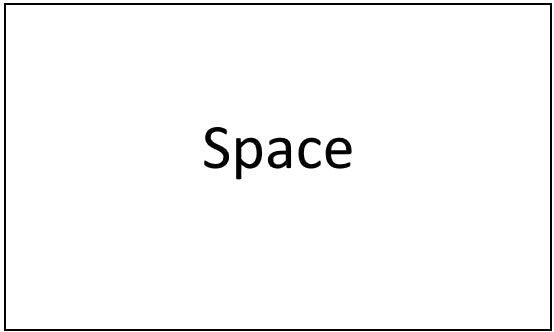
Leave Space
Share
Introduction: The Clutter Tax and Why Your Thoughts Need Breathing Room
Think about that one drawer in your home. The one where mismatched keys, old receipts, and stray buttons go to be forgotten. When you cram things together, you give yourself permission to ignore them.
Your journal can become that drawer.
When we write our thoughts tightly together, stacking line after line without a break, we pay a clutter tax. We instinctively hide the difficult parts. The confusing emotions and contradictory ideas get squeezed between simpler thoughts, where they can be safely overlooked. This could prevent us from achieving true clarity.
The solution is simple. Leave space. This isn't wasted paper. It's reserved intellectual real estate, set aside for the most important work you will do. Using white space in journaling is the first step toward transforming your notebook from a static record into a dynamic tool for growth.
The Strategic Benefit of White Space: A Tool for Deep Learning
Facilitating the Revision Loop
The space you leave on a page is not empty. It's an invitation to return to add, modify, or even continue the conversation.
An initial thought is rarely a final one. Leaving room allows you to revisit the sentence as you re-read it. It doesn’t have to be that same sitting either. You can revisit an entry days or weeks later. You can add new context, correct a flawed assumption, challenge an old belief, or even ask yourself “why.” This is the revision loop. It turns a first draft of a thought into a refined insight. This can be a powerful journaling technique for insight and self-development.
No Place for Ideas to Hide
When thoughts are spread out on the page, each one is exposed. It has to stand on its own, without the cover of surrounding text.
This visual separation makes it impossible to ignore the ideas that make you uncomfortable. You can clearly see your limiting beliefs. You can identify flawed logic. This practice builds journaling accountability. You are forced to confront what is true, not just what feels easy to write down. How does white space improve my clarity of thought? By giving each thought nowhere to hide.
Connecting Feeling to Action
A journal entry captures more than just a thought. It captures a feeling. The space around your words provides a physical prompt to reconnect with the emotional core of what you wrote.
This gap is where you can note the feeling that came with the thought. It’s where you can add the immediate next step that an insight demands. It creates a bridge between your internal world and your external actions, improving clarity in writing and in life.
Three Practical Techniques for Journaling Accountability
Here are simple journaling layout ideas to put this principle into practice.
The Double-Line Rule
This is the simplest way to begin. Write on every second line.
This immediately creates room for clarification and reflection. The technique forces you to slow down, giving more weight to each word. It honors the physical experience of writing, respecting the paper and the process. The handwriting benefits are immediate. Your words become more deliberate and your thinking becomes clearer.
The Margin Tweak
The margins are not just borders. They are your workshop.
Use the margins and the space between lines specifically for edits and refinements. When you re-read an entry, use that space to add a "truth check." Is this thought completely honest? What am I not saying? This is one of the best journal methods for revision and reflection.
Also, who’s to say you need to use an entire line every time?
If a thought is done, a thought is done.
Leave the white space.
Go to the next line…
The Immediate Action Addendum
A breakthrough thought demands an immediate action.
When you write down a powerful insight, use the surrounding white space to answer one question. What is the very next step I can take? It might be sending an email, making a phone call, or simply deciding to view a situation differently. This links your learning directly to action.
Write A Script
If you were to have a conversation with a confidant or coach or someone else about the subject of your writing, what might they say?
They could say a couple things.
Like what? What would they ask you?
They could ask various questions.
Sure. Also, how would they ask you to clarify or how would they challenge you?
Have that conversation on paper.
Conclusion: Making Room for Growth
Leaving space on a page is more than a technique. It is a mental discipline. It is a commitment to prioritizing clarity over volume and truth over comfort.
We also understand it when you love the pen or the paper you’re using. They can seduce you to fill the page.
However, in this case You are creating an environment – a canvas where your best ideas can be seen, challenged, and refined. You are making physical room for your own growth.
Try it sometime. Leave your next journal entry with intentional space.
Let your thoughts evolve.
